PRODUCT INFO
Deramaxx chewable tablets are a non-steroidal anti-inflammatory drug for dogs only.
WHAT THIS PRODUCT CURES
Deramaxx controls pain and inflammation in dogs, especially after orthopedic and dental operative procedures as well as in osteoarthritis patients.
Deramaxx chewable tablets are a non-steroidal anti-inflammatory drug for dogs only.
WHAT THIS PRODUCT CURES
Deramaxx controls pain and inflammation in dogs, especially after orthopedic and dental operative procedures as well as in osteoarthritis patients.
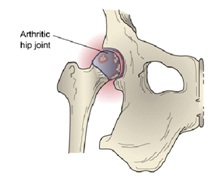
PET SYMPTOMS
As a result of hereditary predisposition, natural aging processes or injury, a significant number of dogs are suffering from osteoarthritis. It is the degenerative joint condition, most commonly affecting limb joints such as hips, elbows, ankles or knees. The first sign of this condition is usually the pain in the affected limb. Since the animals cannot tell us if they are in pain, we need to be able to recognize the changes in their behavior. Animals with painful joints will often show reluctance when required to climb stairs or jump on the couch, for example. In certain cases, they will have difficulties sitting, rising or squatting. They are not eager to exercise and often display stiffness after physical activity. In severe cases of pain, there will even be visible loss of appetite and weight loss. The animals are likely to spare the affected limb and can be lame if the pain and the arthritic changes have advanced. Upon detailed examination of the animal, it can be noticed that the affected joints are painful and inflamed (swollen, warm).
As a result of hereditary predisposition, natural aging processes or injury, a significant number of dogs are suffering from osteoarthritis. It is the degenerative joint condition, most commonly affecting limb joints such as hips, elbows, ankles or knees. The first sign of this condition is usually the pain in the affected limb. Since the animals cannot tell us if they are in pain, we need to be able to recognize the changes in their behavior. Animals with painful joints will often show reluctance when required to climb stairs or jump on the couch, for example. In certain cases, they will have difficulties sitting, rising or squatting. They are not eager to exercise and often display stiffness after physical activity. In severe cases of pain, there will even be visible loss of appetite and weight loss. The animals are likely to spare the affected limb and can be lame if the pain and the arthritic changes have advanced. Upon detailed examination of the animal, it can be noticed that the affected joints are painful and inflamed (swollen, warm).
PET AILMENTS
Osteoarthritis is the most common cause of joint pain in dogs. It is the degenerative disease of joints, caused by the injuries or as a result of genetic predisposition and old age. Osteoarthritis most commonly affects hips, knees and elbows.
RELATIVE INFO ON BREEDS MOST ASSOCIATED WITH THIS AILMENT
Osteoarthritis is usually the condition of older dogs and can be a part of the aging process. However, large and overweight dogs are more likely to develop joint deformations. Dog breeds with high hereditary predisposition for osteoarthritis are Rottweilers, Great Danes, Mastiffs, Golden Retrievers, Newfoundlands, Labrador Retrievers, German Shepherds, Dobermans and St. Bernards.
Osteoarthritis is the most common cause of joint pain in dogs. It is the degenerative disease of joints, caused by the injuries or as a result of genetic predisposition and old age. Osteoarthritis most commonly affects hips, knees and elbows.
RELATIVE INFO ON BREEDS MOST ASSOCIATED WITH THIS AILMENT
Osteoarthritis is usually the condition of older dogs and can be a part of the aging process. However, large and overweight dogs are more likely to develop joint deformations. Dog breeds with high hereditary predisposition for osteoarthritis are Rottweilers, Great Danes, Mastiffs, Golden Retrievers, Newfoundlands, Labrador Retrievers, German Shepherds, Dobermans and St. Bernards.
QUESTIONS FOR MY VET
1. What is Deramaxx and how it works?
Deramaxx is a prescription non-steroidal anti-inflammatory drug (NSAID) in the form of tablets for control of pain and inflammation in dogs with osteoarthritis and after orthopedic surgical procedures.
2. How can Deramaxx help my dog with osteoarthritis?
Osteoarthritis is a progressive and painful condition. Deramaxx cannot cure osteoarthritis, but it can control and decrease the accompanying pain and that way improve your dog’s quality of life. Of course, every animal is different and responds to the treatment differently. It is important to seek veterinary advice and make a detailed plan for condition management.
3. In what cases should my dog not be given Deramaxx?
If your dog has a history of known hypersensitivity to deracoxib (the active ingredient of Deramaxx), Aspirin or other NSAIDs or corticosteroids. Do not administer Deramaxx if your dog is suffering from bloody stool, decreased appetite, pre-existing kidney or liver diseases or has any condition that can lead to dehydration.
4. Does Deramaxx interact with other drugs?
Deramaxx should not be given with other NSAIDs or corticosteroids. Consult your veterinarian before administering Deramaxx. Mention all the drugs or dietary supplements your dog is currently taking.
5. What side effects can my dog have during Deramaxx treatment?
Although Deramaxx can cause certain side effects in dogs they are usually mild and rare. Side effects to Deramaxx include vomiting, diarrhea, change in stool color, changes in drinking and urination rhythm, decrease of appetite, depression, restlessness. If you notice any of the above mentioned side effects in your pet, stop administering Deramaxx and contact your veterinarian.
6. What should I do in case of overdose with Deramaxx tablets?
In case of accidental overdose, immediately seek veterinary assistance.
7. How can Deramaxx help my dog after orthopedic surgery?
Deramaxx can help control your dog’s pain and inflammation after orthopedic procedures if given according to the veterinary instructions and according to the instructions on the label.
8. What should I discuss with the vet before administering Deramaxx?
Talk to your veterinarian about any health issues your dog might be experiencing, such as digestive problems, kidney diseases, allergies. Be sure to mention all the drugs and/or dietary supplements your dog is currently taking or you plan to administer in the future. Inform your vet if your dog is currently pregnant or nursing.
1. What is Deramaxx and how it works?
Deramaxx is a prescription non-steroidal anti-inflammatory drug (NSAID) in the form of tablets for control of pain and inflammation in dogs with osteoarthritis and after orthopedic surgical procedures.
2. How can Deramaxx help my dog with osteoarthritis?
Osteoarthritis is a progressive and painful condition. Deramaxx cannot cure osteoarthritis, but it can control and decrease the accompanying pain and that way improve your dog’s quality of life. Of course, every animal is different and responds to the treatment differently. It is important to seek veterinary advice and make a detailed plan for condition management.
3. In what cases should my dog not be given Deramaxx?
If your dog has a history of known hypersensitivity to deracoxib (the active ingredient of Deramaxx), Aspirin or other NSAIDs or corticosteroids. Do not administer Deramaxx if your dog is suffering from bloody stool, decreased appetite, pre-existing kidney or liver diseases or has any condition that can lead to dehydration.
4. Does Deramaxx interact with other drugs?
Deramaxx should not be given with other NSAIDs or corticosteroids. Consult your veterinarian before administering Deramaxx. Mention all the drugs or dietary supplements your dog is currently taking.
5. What side effects can my dog have during Deramaxx treatment?
Although Deramaxx can cause certain side effects in dogs they are usually mild and rare. Side effects to Deramaxx include vomiting, diarrhea, change in stool color, changes in drinking and urination rhythm, decrease of appetite, depression, restlessness. If you notice any of the above mentioned side effects in your pet, stop administering Deramaxx and contact your veterinarian.
6. What should I do in case of overdose with Deramaxx tablets?
In case of accidental overdose, immediately seek veterinary assistance.
7. How can Deramaxx help my dog after orthopedic surgery?
Deramaxx can help control your dog’s pain and inflammation after orthopedic procedures if given according to the veterinary instructions and according to the instructions on the label.
8. What should I discuss with the vet before administering Deramaxx?
Talk to your veterinarian about any health issues your dog might be experiencing, such as digestive problems, kidney diseases, allergies. Be sure to mention all the drugs and/or dietary supplements your dog is currently taking or you plan to administer in the future. Inform your vet if your dog is currently pregnant or nursing.
HOW IT WORKS
Deramaxx is deracoxib, a non-steroid, anti-inflammatory drug of the coxib class. Deracoxib inhibits the Cyclooxygenase 1 and 2 (COX-1 and COX-2), enzymes responsible for production of inflammatory mediators, prostaglandins. Inflammatory mediators are responsible for the development of pain and inflammation symptoms. That way deracoxib directly stops those symptoms from appearing.
Deramaxx is deracoxib, a non-steroid, anti-inflammatory drug of the coxib class. Deracoxib inhibits the Cyclooxygenase 1 and 2 (COX-1 and COX-2), enzymes responsible for production of inflammatory mediators, prostaglandins. Inflammatory mediators are responsible for the development of pain and inflammation symptoms. That way deracoxib directly stops those symptoms from appearing.
DIRECTIONS FOR USE
Licensed veterinarian prescribes this medication. The instructions provided in the label should be strictly followed. Consider all the potential risks and benefits of Deramaxx before deciding to administer Deramaxx tablets to your pet. Deramaxx can be given with or without food, but be sure that your pet always has plenty of fresh water to drink. If you do not understand the instruction of the label or have any further questions concerning Deramaxx, contact your veterinarian or pharmacist.
DOSAGE AND ADMINISTRATION
INGREDIENTS
Deramaxx chewable tablets contain 12 mg, 25 mg, 50 mg, 75 mg or 100 mg of active ingredient deracoxib.
Licensed veterinarian prescribes this medication. The instructions provided in the label should be strictly followed. Consider all the potential risks and benefits of Deramaxx before deciding to administer Deramaxx tablets to your pet. Deramaxx can be given with or without food, but be sure that your pet always has plenty of fresh water to drink. If you do not understand the instruction of the label or have any further questions concerning Deramaxx, contact your veterinarian or pharmacist.
DOSAGE AND ADMINISTRATION
- Deramaxx chewable tablets appear in five strengths: 12 mg, 25 mg, 50 mg, 75 mg and 100 mg.
- The usual dose in the treatment of osteoarthritis pain and inflammation for dogs is 0.45-0.91 mg/lb per day (1-2 mg/kg per day) given when needed once a day.
- The usual dose in the treatment of postoperative orthopedic pain and inflammation for dogs is 1.4-1.8 mg/lb per day (3-5 mg/kg per day) given when needed once a day, but not longer than 7 days in a row.
- The usual dose in the treatment of postoperative dental pain and inflammation for dogs is 0.45-0.91 mg/lb (1-2 mg/kg per day) given when needed once a day for 3 days. The first dose should be given 1 hour prior to the procedure, and the following doses should be for two more days.
- Small dogs that need less than 12.5 mg of Deramaxx can be accurately dosed through the use of 12 mg tablet, which can be split in half. Dosing of small dogs with bigger tablets can lead to inaccurate dosing and cause adverse reactions.
INGREDIENTS
Deramaxx chewable tablets contain 12 mg, 25 mg, 50 mg, 75 mg or 100 mg of active ingredient deracoxib.
PRODUCT CAUTIONS
Follow the instructions provided in the drug label, especially on the issue of drug dosing, to avoid possible adverse reactions.
Prior to initiation of the Deramaxx treatment, dogs should undergo detailed veterinary checkup with appropriate laboratory tests.
The use of Deramaxx with other NSAIDs should be avoided to prevent the potential gastrointestinal ulceration or perforation. The safe use of Deramaxx in dogs younger than 4 months, pregnant or lactating bitches and dogs used for breeding has not been determined.
Dogs with history of hypersensitivity to Deramaxx or other NSAIDs should not use Deramaxx.
STORAGE AND DISPOSAL
Store Deramaxx tablets at the room temperature between 15 and 30°C.
BRAND VS GENERIC COMPARISON
There are no generic varieties of deracoxib available on the market. There are several possible substitutions containing different active ingredients and coming in different formulations.
- For animal use only; not for use on humans.
- Keep away from children. Consult a doctor in case of accidental human ingestion.
- This product is for dog use only, not to be used in cats.
Follow the instructions provided in the drug label, especially on the issue of drug dosing, to avoid possible adverse reactions.
Prior to initiation of the Deramaxx treatment, dogs should undergo detailed veterinary checkup with appropriate laboratory tests.
The use of Deramaxx with other NSAIDs should be avoided to prevent the potential gastrointestinal ulceration or perforation. The safe use of Deramaxx in dogs younger than 4 months, pregnant or lactating bitches and dogs used for breeding has not been determined.
Dogs with history of hypersensitivity to Deramaxx or other NSAIDs should not use Deramaxx.
STORAGE AND DISPOSAL
Store Deramaxx tablets at the room temperature between 15 and 30°C.
BRAND VS GENERIC COMPARISON
There are no generic varieties of deracoxib available on the market. There are several possible substitutions containing different active ingredients and coming in different formulations.
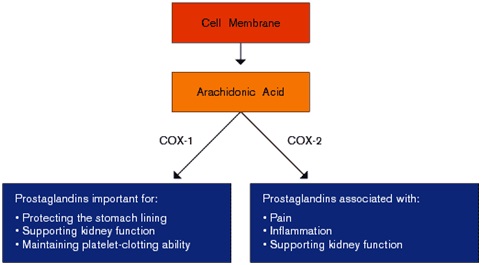
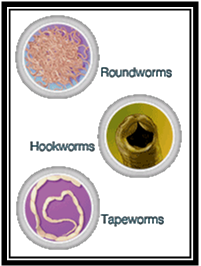
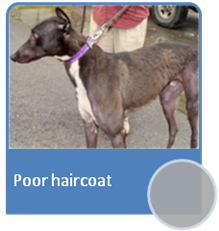
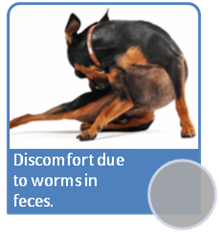

 RSS Feed
RSS Feed